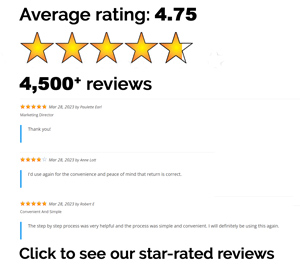Most people who file a tax return walk away with a refund. Although you may feel like you’ve won the lottery, a tax refund isn’t free money from the government. It’s actually your own money you’re getting back from Uncle Sam. During the year federal and state taxes are withheld from your pay. If the amount that was withheld is more than your tax liability, you’ll receive the overage as a tax refund when you file your tax return. Here are some other things you need to know about tax refunds.
Adjusting your withholding can boost your tax refund
Do you prefer to get more money per paycheck or a bigger tax refund? Just know that if you choose the latter, you’re giving Uncle Sam an interest-free loan. We’re not here to judge you though. If you owed the IRS this year or received a smaller refund than anticipated, now is a good time to adjust your withholding. Generally, claiming fewer allowances on your W-4 will increase the amount of taxes withheld from your pay. The result will be a smaller paycheck during the year, but a better refund at tax time. We suggest using a tax withholding calculator to decide what’s best for you.
Filing early minimizes the risk of identity theft
Crooks will do anything to get their hands on your money. Whether it’s making phony calls impersonating the IRS or sending phishing emails. Some even steal your personal information to file a fraudulent tax return and claim your refund. You may not even realize there’s an issue until you try to file your return and it gets rejected. Although the problem can be resolved, it won’t happen overnight. Filing early can prevent your refund from landing in the wrong hands.
Take advantage of available tax breaks
Claiming every tax credit and deduction you’re eligible for minimizes your tax liability and can help you get a bigger refund. Some valuable tax credits you don’t want to miss are the Earned Income Tax Credit (EITC), Child Tax Credit, and the Saver’s Credit. We can help you maximize your tax breaks, so you get the biggest possible refund. Start now!
Direct deposit is the fastest way to get your money
Without a shadow of doubt, the fastest way to get your refund is to e-file and choose direct deposit. With ezTaxReturn you can prepare and e-file your return in just 30 minutes. Most refunds are issued within 21 days of IRS acceptance. Filing on paper takes weeks longer for your return to be processed. Another perk of choosing direct deposit is that you can split your refund in up to three accounts. Since being a good saver isn’t everyone’s forte, having a portion of your refund deposited directly into your savings can make life easier. The rest of the money can be allocated towards something more fun.
How to correct your bank information after you’ve filed
Nothing slows down your direct deposit more than providing the wrong account information. On a check, your routing number consists of 9-digits and is located in the lower left-hand corner. The second set of numbers is your checking account number. This information is also listed on your monthly bank statement. Always double check both numbers before e-filing your tax return. If you missed a digit in the bank account or routing number and the IRS is unable deposit your refund, they may issue a paper check instead. The check will be sent to the address on your return so make sure you provide current information. If your refund is deposited into an account that belongs to someone else, you’ll need to work with your bank to recover the funds. If you catch your mistake early, you can try contacting the IRS to stop the direct deposit. They can be reached at 800-829-1040.
Use the “Where’s My Refund?” tool to check your refund status
The best place to find information about your tax refund is on IRS.gov. Their “Where’s My Refund?” tool tracks your tax return from the moment it’s received until your refund is issued. To get your refund status you’ll need your Social Security Number, filing status and the exact refund amount. The tool is updated once a day so there’s no need to check more than that. If you e-filed, you can begin tracking your refund 24 hours after acceptance. Paper filers must wait at least 4 weeks before checking the tool.
If you filed an amended return and are expecting a refund, you can track its status using the “Where’s My Amended Return?” tool. Keep in mind, it usually takes 16 weeks to be processed.
The IRS can seize your tax refund to pay certain debts
We know you’re excited about getting a refund but don’t spend the money before it’s in your account. There are some instances where your refund may be reduced. For example, if you make a mistake on your tax return and the IRS corrects it. The IRS can also seize your refund if you have past-due child support, an unpaid tax debt, unemployment compensation debt or you defaulted on your federal student loans. In either case, you’ll receive an IRS notice in the mail with a detailed explanation.




